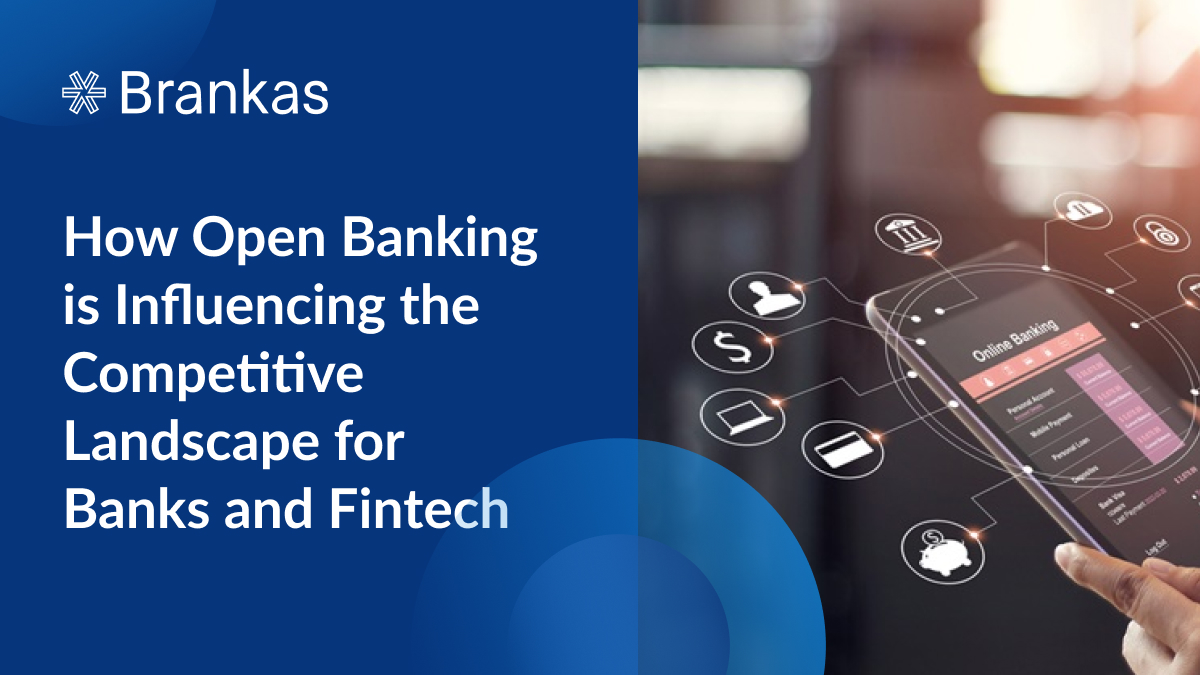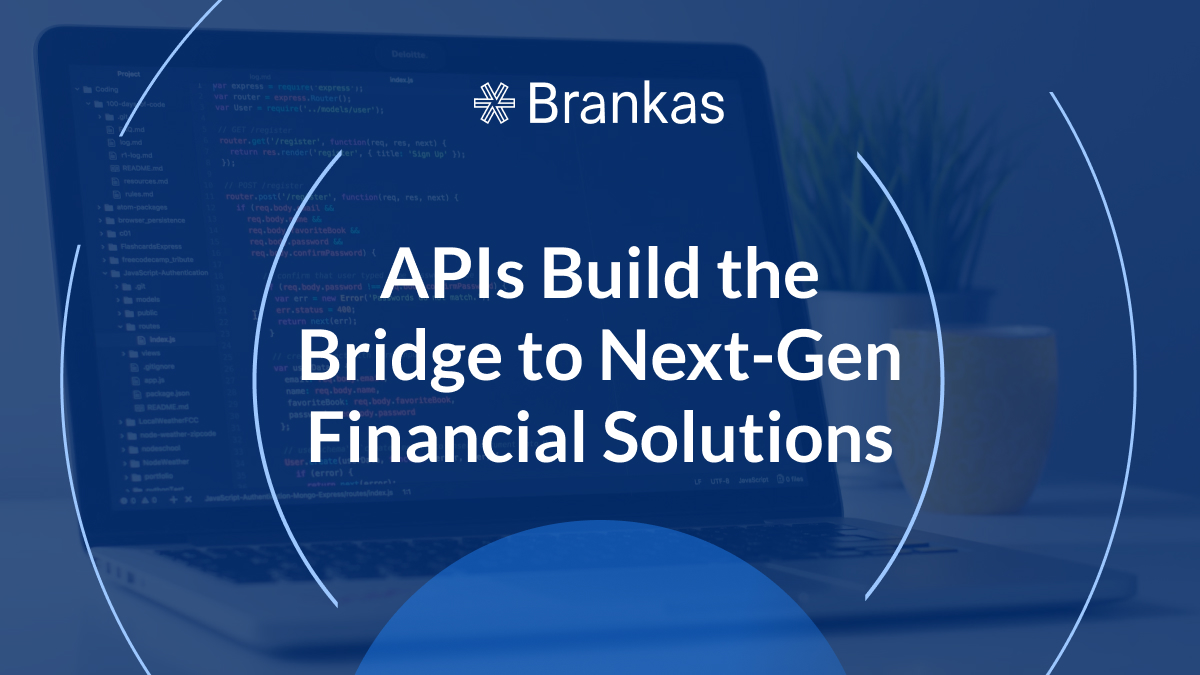APIs Build the Bridge to Next-Gen Financial Solutions
APIs, or Application Programming Interfaces, are transforming finance today. They serve as the digital connectors that enable seamless communication and interaction between different software applications. APIs act as intermediaries to facilitate the exchange of data and functionalities.
The significance of financial APIs lies not merely in their technical prowess but in their ability to redefine how financial services are developed, delivered, and consumed. APIs serve as the linchpin in the era of open finance. They break down silos and foster collaboration among institutions that were once walled off from each other. These digital enablers are revolutionizing everything from core banking systems to how we transact and manage wealth. The rise of next-gen financial solutions hinges on the agility, efficiency, and innovation that APIs bring to the table.
The Role of APIs in Financial Innovation
Data accuracy and speed are crucial in finance, and APIs drive the wheels of innovation. These are the reasons APIs are pivotal in reshaping financial landscapes:
1. Facilitates Seamless Data Exchange
a. Real-time data sharing between financial institutions
Gone are the days of delayed and fragmented data sharing. APIs enable financial institutions to communicate effortlessly and facilitate real-time exchange of critical information. Take, for instance, the integration of APIs in payment processing. When you make a purchase using a mobile wallet or a banking app, APIs work behind the scenes to instantly verify transactions, ensuring a swift and secure data exchange between your bank, the vendor, and payment gateways.
b. Enhances customer experience through data accessibility
APIs empower consumers with easy access to their financial data across various platforms by providing a standardized way for different systems to communicate. Consider the integration of financial data into budgeting apps or investment platforms. APIs enable users to view and manage their finances comprehensively, regardless of how many financial institutions they might be dealing with.
2. Drives Open Banking Initiatives
Open banking is at the heart of financial innovation, and APIs are its driving force. Open banking involves the secure sharing of financial data with third-party service providers (TPPs) through APIs. The shift towards openness is transforming the industry, fostering competition, and ushering in a new era of customer-centric services.
a. Benefits consumers and businesses
Open banking means more personalized and tailored financial services for consumers. APIs allow FinTech startups to develop applications that can access a user’s financial data (with their consent) and provide services like budgeting advice, investment recommendations, or even streamlined loan approval processes. This empowers consumers and fosters a more competitive landscape among financial service providers.
API Integration in Banking Systems
Traditional banking operations were complicated by siloed information, complex processes, and legacy systems that hindered adaptability. The infusion of APIs into core banking systems acts as a catalyst for operational efficiency. Through seamless data exchange, APIs allow different banking modules – such as customer information, transactions, and account management – to communicate effortlessly. This interconnectivity streamlines processes, reduces manual intervention, and accelerates the pace at which information flows within the institution.
Consider a customer updating their contact information through a mobile banking app. APIs enable this change to reflect instantly across all banking channels, eliminating the need for redundant data entries and ensuring consistency. This efficiency extends to internal processes where APIs facilitate the integration of diverse banking applications, from customer relationship management to fraud detection, creating a cohesive and streamlined operational environment.
Security in finance is non-negotiable. API integration in core banking systems shifts how security and risk management are approached. APIs come fortified with security protocols, ensuring that data transmission between different banking modules is encrypted and protected. This inherent security layer safeguards sensitive customer information and strengthens the banking infrastructure against cyber threats.
API integration facilitates a more proactive approach to risk management. By enabling real-time monitoring and analysis of transactions, APIs empower banks to identify anomalies and potential risks immediately. This heightened visibility allows for prompt intervention, minimizing the impact of fraudulent activities or security breaches.
Consider the example of real-time transaction monitoring through APIs. If an unusual pattern or suspicious activity is detected, the API triggers an alert and prompts the institution to take immediate action. Proactive risk management and enhanced security features fortify the core banking systems against emerging threats and ensure a resilient financial ecosystem.
Finance APIs Use Cases
APIs are the building blocks of a more interconnected and efficient financial ecosystem. These use cases underscore the versatility and transformative potential of APIs in the financial sector.
Payment and Transaction APIs
Real-time payments- APIs facilitate instant and secure payment transactions, ensuring that funds are transferred in real-time. This use case is particularly crucial for businesses and consumers seeking immediate and efficient financial transactions.
Cross-border payments- APIs streamline cross-border transactions by connecting financial institutions globally. This reduces the complexities associated with international transfers, leading to faster and more cost-effective cross-border payments.
Open Banking APIs
Account Information Services (AIS)- APIs allow third-party applications to access account information securely, providing consumers with a consolidated view of their financial data across multiple institutions. This enhances transparency and enables personalized financial management.
Payment Initiation Services (PIS)- APIs enable third-party applications to initiate payments directly from a user’s bank account. This facilitates seamless and secure transactions without the need for traditional payment methods.
Lending APIs
Digital lending platforms- APIs power digital lending platforms, allowing borrowers to access loans quickly and conveniently. The integration of APIs streamlines the loan application, approval, and disbursement processes.
Credit scoring and risk assessment- APIs provide access to credit scoring and risk assessment tools, enabling financial institutions to make informed lending decisions. This results in more accurate assessments of borrowers' creditworthiness.
Investment and Trading APIs
Algorithmic trading- APIs empower financial institutions and traders to execute high-frequency and algorithmic trading strategies seamlessly. This automation enhances trading efficiency and allows for rapid responses to market fluctuations.
Access to financial markets- APIs provide developers and fintech companies with the ability to access financial markets, enabling the creation of investment platforms, robo-advisors, and other innovative financial products.
Personal Finance Management APIs
Budgeting apps- APIs integrate with banking systems to gather transaction data, enabling the development of budgeting apps. Users can track their spending, set financial goals, and receive personalized financial advice.
Automated savings and investments- APIs enable the automation of savings and investment processes. Users can set up recurring transfers or investments, allowing for hands-free wealth accumulation and financial planning.
Successful Implementations of APIs in Finance
These real-life examples of successful implementations across various domains will demonstrate the impact of API integration in the financial sector. These case studies underscore the transformative power of APIs, showcasing how they have become the bedrock of innovation for leading financial institutions.
BBVA- a global financial group headquartered in Spain, has been at the forefront of embracing open banking principles.
BBVA’s Open Platform is a prime example of leveraging APIs to enhance customer experiences. The bank opened up its core functionalities through APIs, allowing third-party developers to create applications and services. This move has resulted in a thriving ecosystem of fintech partnerships, offering customers diverse services beyond traditional banking.
Through API-driven initiatives, BBVA has not only fostered innovation but has also positioned itself as a leader in the open banking space. The collaborative approach has enabled the bank to deliver personalized and value-added services to its customers, ultimately strengthening its market position.
Goldman Sachs- a renowned investment bank, embarked on a digital transformation to stay competitive in the rapidly evolving financial landscape.
The bank embraced APIs to modernize its operations and enhance client services. Through the Goldman Sachs Developer platform, the institution opened up access to its core services, allowing clients and partners to interact programmatically. This initiative accelerated the development of new financial products and fostered collaboration with external developers.
Goldman Sachs' API-driven approach has positioned the bank as a leader in digital banking. The increased agility and collaboration facilitated by APIs have enabled the institution to adapt swiftly to changing market dynamics to drive innovation and elevate the overall client experience.
PayPal- a leading online payment platform, has evolved from a simple payment system to a comprehensive financial services provider.
The PayPal Developer platform offers a range of APIs, allowing businesses to integrate payment processing, subscription management, and even credit services into their applications. This has enabled companies to offer diverse payment options while leveraging PayPal’s secure infrastructure.
PayPal’s API-centric approach has played a pivotal role in transforming it from a payment platform to a financial ecosystem. The availability of APIs has empowered businesses to enhance their checkout experiences, manage subscriptions seamlessly, and tap into PayPal’s extensive user base, ultimately contributing to PayPal’s continued growth and relevance in the digital payments landscape.
API Security and Privacy Concerns
The integration of APIs in the financial sector is accompanied by an imperative need for robust security and privacy measures. The success of API integration hinges on the ability to innovate while upholding the highest standards of security and regulatory compliance.
Addressing security challenges involves implementing encryption and data protection measures, ensuring confidential and secure data transmission between interconnected systems. Authentication protocols, such as API keys, OAuth, and JWT, play a pivotal role in verifying the legitimacy of users and applications, safeguarding against unauthorized access and data manipulation.
Financial APIs must navigate a complex regulatory landscape, adhering to regulations like GDPR and PSD2 that govern the handling of personal and financial data. Striking a delicate balance between innovation and compliance requires a proactive approach to foster a culture of continuous monitoring and adaptation to evolving regulatory frameworks within financial institutions.
Overcoming Integration Challenges
One of the primary challenges in integrating financial APIs is dealing with legacy systems. Many established financial institutions operate on an infrastructure that predates the digital era, making seamless integration with modern API technologies a complex task. Overcoming this hurdle requires a strategic approach, often involving gradual system updates, legacy system optimization, or introducing middleware solutions that act as intermediaries between old and new systems.
The financial industry encompasses a diverse array of institutions, each with its own systems and protocols. Achieving standardization in API development becomes a challenge when dealing with this heterogeneity. The lack of universally accepted standards can lead to interoperability issues, making it difficult for different systems to communicate effectively. Industry-wide collaboration and establishing common standards become essential to address this challenge and foster a more cohesive and interconnected financial ecosystem.
Future Trends
Technology continues to redefine how financial services are delivered and consumed. The integration of artificial intelligence (AI) and machine learning (ML) is poised to be a transformative trend in financial APIs. These technologies enhance the predictive capabilities of APIs, enabling more accurate risk assessments, fraud detection, and personalized financial recommendations. AI-driven chatbots and virtual assistants are becoming integral parts of financial service interfaces to provide users with dynamic and responsive interactions.
The rise of blockchain technology introduces new possibilities for financial APIs, particularly in decentralized finance (DeFi). Blockchain’s inherent security and transparency are leveraged to create trustless and decentralized financial systems. Smart contracts, powered by blockchain, enable automated and secure financial transactions without the need for traditional intermediaries. The integration of financial APIs with blockchain opens doors to innovative financial instruments, lending protocols, and cross-border payment solutions.
Looking Ahead
The future of financial APIs holds immense promise, driven by emerging technologies, adaptive strategies, and a collective commitment to innovation within the financial industry. The potential developments on the horizon paint a more interconnected, efficient, and user-centric financial ecosystem.
Further collaboration and innovation within the financial industry is a must. Institutions that embrace the transformative power of APIs and actively participate in industry-wide standardization efforts will be well-positioned to navigate challenges, foster interoperability, and deliver cutting-edge financial solutions. Collaboration between traditional financial institutions, FinTech startups, and regulatory bodies will be instrumental in shaping a regulatory framework that encourages innovation while safeguarding consumer interests. The industry can collectively usher in a future where APIs meet the demands of today and pave the way for tomorrow’s financial landscape.


